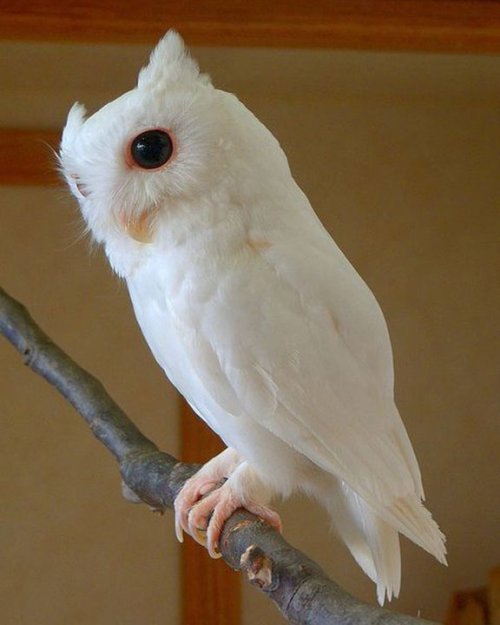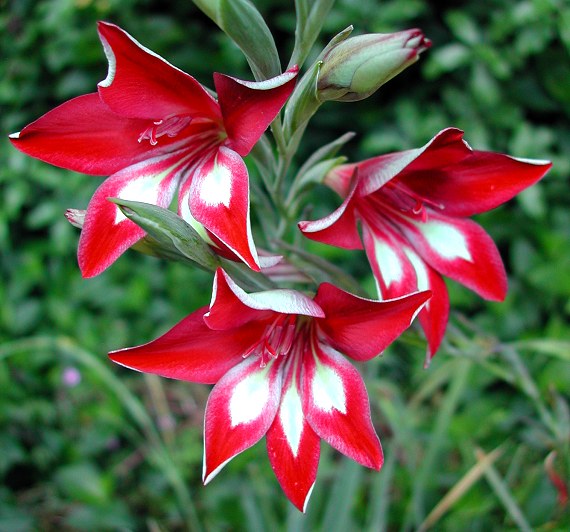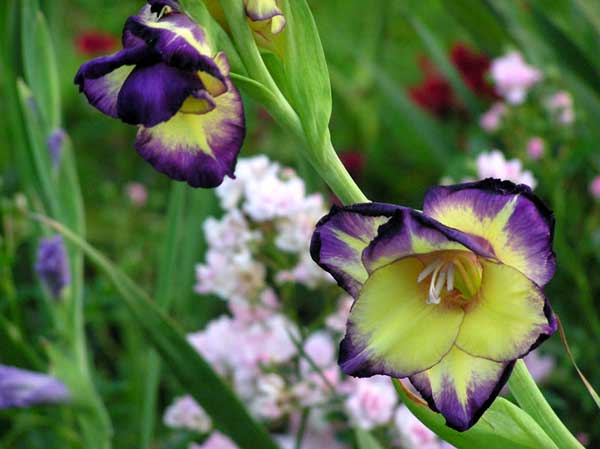Ah, the Aster, a wildflower native through-out the US, Europe, and Asia. September. Autumn. Chill in the air. The first whiffs of that crunchy dry leaf smell as you weed and work around in your late season garden, corralling the wild aster back with the borders of the bed. She's sweet, our September gal.
Asters get their name from an old Greek word meaning "star", referring to the shape of the flower. Also called Starworts, Michaelmas Daisies or Frost Flowers, this star-like flower can be found in a variety of colors – white, red, pink, purple, lavender and blue, with mostly yellow centers. Aster flowers are popular in many gardens for their attractive and colorful blossoms and ability to grow in all hardiness zones. Interestingly while an Aster blossom may appear to be a single flower it is not so; an Aster’s bloom is actually a combination of approximately 300 small (usually yellow) flowerets surrounded by colorful petals. They possess a Daisy-like appearance which is often deceptive as they are actually a member of the Sunflower family. If you need a blast of late season color, Aster is the gal for you.
Aster are a rich source of nectar for bees and butterflies. As they bloom during the peak of the monarch migration, they are an important waystation for our lepidopterian travellers. Because they also attract so many bees, plant them away from areas where you walk or play, especially if you have significant bee allergies. The shrubs can grow up to 3 feet tall, depending on the variety, so if you plant them away from the house you will still be able to enjoy their beauty.
Asters have long been considered an enchanted flower. Legend says that the goddess Asterea cried when she looked at the earth and saw no stars. Where her tears fell to the ground, Aster bloomed. Others believed that Asters were stardust scattered on the earth by the goddess.
And then there is the Cherokee Indian legend from the southern part of the US. Two warring tribes, fighting over a choice hunting ground, waged war over a hill, down a valley, across a creek, and into a village. All the villagers were killed except for two sisters who hid in the woods. Both wore doeskin dresses, one dyed lavender-blue with fringe, the other one bright yellow. The sisters sought out the Herb Woman who lived over the mountain in another valley. This woman gathered herbs by day and brewed magic potions by night, a gift given to her by the gods. As the sisters slept that night under the stars, the Herb Woman looked into the future and saw that these little girls would be hunted down by the enemy. So she sprinkled them with a magic brew and covered them with leaves. In the morning there were two flowers where the sisters had been. One was the lavender-blue aster, the fringe from the dress having been turned into the outer flower petals (ray flowers) of the aster. The other flower was the yellow goldenrod.
By the way, after years of suffering allergies, especially in the fall, I learned that if you are allergic to Goldenrod you should not take Echinacea (used to boost immunity) as they are related, both belonging to the Compositae family. So now I'm still snottin' and sneezin' but things are noticably better this summer. But I digress...
Aster have been traditionally used by Native American tribes by burning the flowers and leaves, the smoke being used in Inipi (sweat lodge) Ceremonies, to revive the unconscious, to treat mental illness, nosebleeds, headaches, congestion. The dried blossoms were also snuffed for similar purposes, or the vapor inhaled as a steam. Aster tea was used to treat earache, relieve gas pains, stomach aches, and fevers.
Earthnotes has an extensive page listing the medicinal uses of a wide number of aster species. Please keep in mind that many plants are not recommended for medicinal or food uses, some even being poisonous. I am not recommending or supporting their uses for either purpose, just sharing the lore and history of the Aster.
It was once believed that the fragrance of their burning leaves would drive away evil spirits and it was believed during Medieval times that it would drive away serpents. The "star-flower" was believed to be sacred to the gods and so wreaths of asters were placed on their altars. The roots of Aster were crushed and fed to bee colonies that were in poor health. The flavor of homey is said to be improved if you boil asters in wine and place it near the hives.
 |
| China Aster, an annual. Source |
The meaning of the September Birth Flower, the Aster is Love, Faith, Wisdom and symbolizes Valor. The hidden message of the the aster, so favored during the Victorian era, was "Take care of yourself for me". During Victorian times, people were strongly restricted by the rules of etiquette and it was considered totally inappropriate to express feelings of love or affection. Aster is also considered appropriate, due to its meaning and symbolism, to give on Grandparent's Day (September 1), Teacher's Day (September 4th) and Patriot Day (September 11). And of course birth month flowers are beautiful for special celebrations of the month such as birthdays (duh) and weddings.
So let's get some Aster into our gardens. You will often see native Aster varieties growing wild in almost any environment from the tropics to the coldest regions of the north in habitats ranging from extremely arid deserts to bogs. This variability and hardiness means that Aster will grow in almost anyone's garden, even if your thumb isn't as green as maybe you would like. Some areas consider Aster a weed or a problem flower because they do grow so easily. Hardy in USDA zones 4 through 9, Asters should be planted in moist well-drained soil in full sun, but they will tolerate light shading. The plants form broad bushy clumps, so plant them at least 18 inches apart. Mature clumps will need to be divided every 3-4 years, in the early spring, or late fall after the flowering has finished. Pinch back the tops by 6-8 inches at least once during the summer, to create a bushier plant and to prolong the fall bloom. This pinching MUST be done prior to mid-July or it will have an opposite effect and blooming will be reduced. Annual varieties of Asters require the same basic care, but should not be planted in the same spot the following year, to prevent plant diseases such as Aster wilt. Sow seeds directly into the garden in early spring, when all frost danger has passed. Perennial Aster can be propagated by dividing existing clumps or grown from seed sown indoors at about 70° F. Seeds can also be sown directly into the garden after all frost danger has passed.
Before we go, let's take an upclose look at the Aster.
The two images below are from
Microscopy-UK. The first link will take you to the Aster page, photographed by Brian Johnston from Canada and is full of his amazing and gorgeous Aster photos. The second link takes you to Microscopy-IK where you can find anything and everything you never knew you wanted to know about microscopy.
 |
Sticky glandular protuberances on the bracts shown in the photo above.
|
 |
| Monarch juicing up for the trip to Mexico. Source |
Thank you so much for visiting today. And Happy Birthday to all of you Aster Babies- you're each a star! (See what I did there?)






















![[image] [image]](http://i143.photobucket.com/albums/r140/markofrani/WEByardleyjones001.jpg)









































